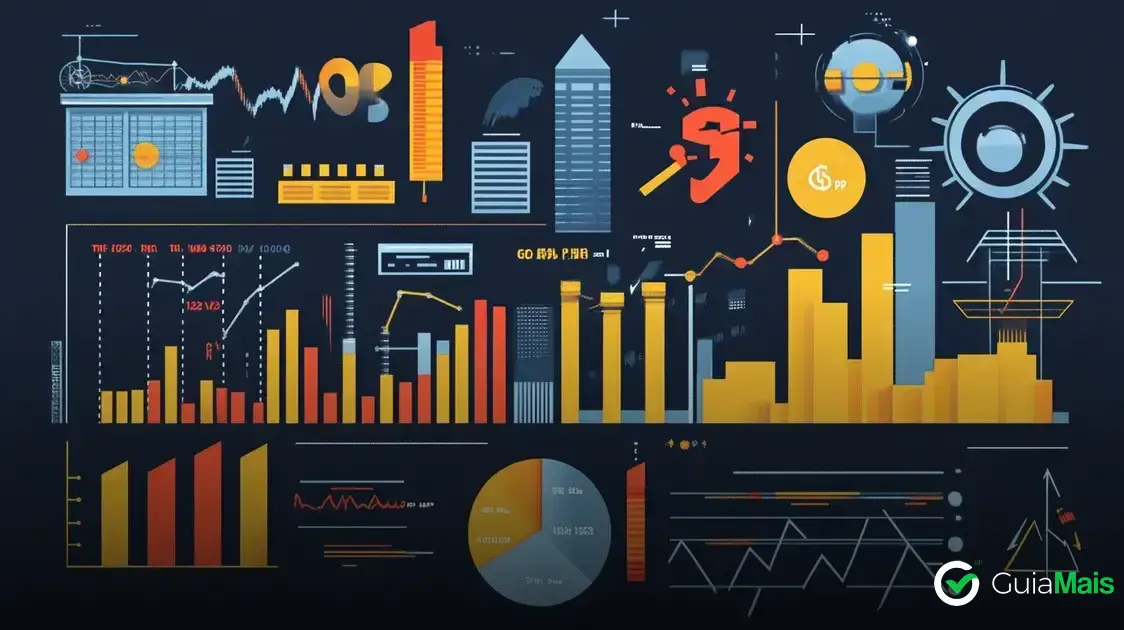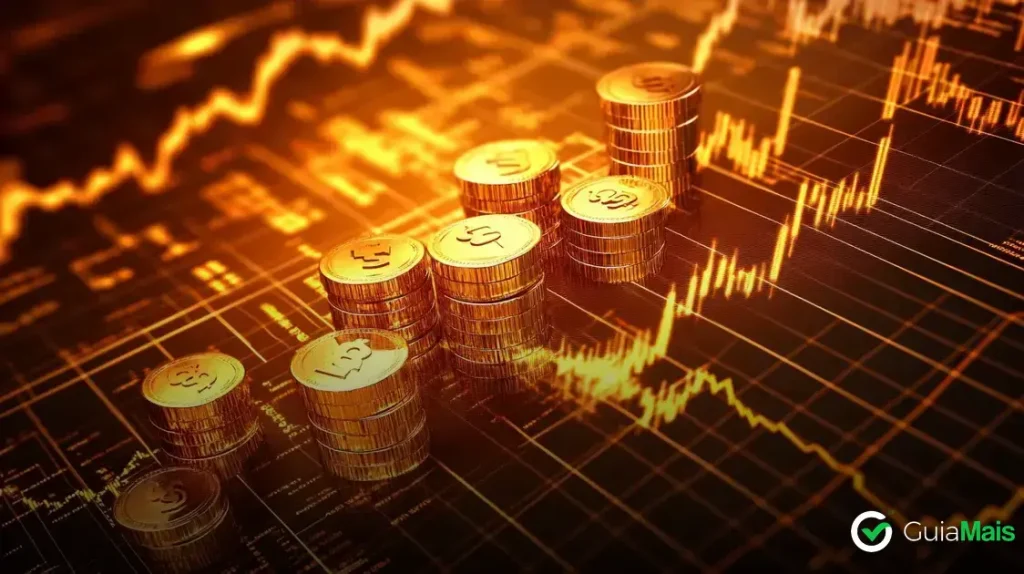Inflation significantly impacts pricing and consumer behaviour, driving up costs and changing spending habits.
Understanding economic indicators, implementing strategies to combat inflation, and anticipating future trends are crucial for navigating these challenges effectively.
In today’s economy, inflation and pricing have become critical topics that impact every consumer’s wallet.
As prices rise, understanding how inflation affects your purchasing power is essential for making informed financial decisions.
Understanding Inflation
Inflation is the rate at which the general level of prices for goods and services rises, resulting in the fall of purchasing power. I
t affects how much purchasing power consumers have. When inflation occurs, each unit of currency buys fewer goods and services.
Why Does Inflation Happen?
Inflation can happen for several reasons. The most common causes are:
- Demand-Pull Inflation: This occurs when demand for goods and services exceeds their supply, leading to higher prices.
- Cost-Push Inflation: Here, the costs of production increase, causing producers to raise prices to cover those costs.
- Built-in Inflation: This happens when businesses and workers expect higher prices in the future and increase wages and prices accordingly.
The Impact of Inflation on Consumers
As inflation rises, the value of money decreases. This means that the same amount of money buys fewer products than before.
For example, if you could buy ten loaves of bread for R100 last year, this year you might only be able to buy eight.
Inflation can also affect savings.
If your money is in a bank account earning interest, but the rate of inflation is higher than the interest, your savings are effectively losing value over time.
Historical Context
Understanding inflation also requires looking at historical trends. Various periods in history have been marked by significant inflation rates.
For instance, the inflation experienced in the late 1970s in South Africa led to widespread economic changes and adjustments in consumer behaviour.
By comprehending inflation, consumers can make better financial decisions and prepare themselves for future changes in the economy.
They can adapt their spending and saving habits to protect their purchasing power.
How Pricing Adjustments Occur
Pricing adjustments occur due to various factors influenced by economic conditions, competition, and consumer behaviour.
Understanding these adjustments is essential to grasp how inflation and pricing interact in the market.
Factors Influencing Pricing Adjustments
Several factors affect how prices change:
- Cost of Production: When the cost of raw materials or labour increases, companies may raise their prices to maintain profit margins.
- Market Demand: If more people want a product, companies might increase prices to take advantage of that demand. This is known as demand-driven pricing.
- Competition: If competitors lower their prices, businesses may need to adjust their prices to remain competitive. Conversely, if they can offer something unique, they may increase prices.
Types of Pricing Adjustments
Pricing adjustments can take various forms, such as:
- Dynamic Pricing: Prices fluctuate based on real-time supply and demand. For example, airline ticket prices change frequently.
- Seasonal Pricing: Some products may cost more during peak seasons, like holiday decorations or summer clothing.
- Promotional Pricing: Temporary price reductions encourage customers to buy. This often happens during sales or special events.
Monitoring Market Trends
Businesses must constantly monitor market trends and consumer behaviour to adjust prices effectively.
Tools such as market research and customer feedback help in understanding how changes in pricing affect consumer decisions.
Additionally, analysing competitor pricing strategies ensures that a business remains relevant in the market.
Companies should be flexible and ready to adjust prices based on ongoing economic changes.
The Relationship Between Inflation and Pricing

The relationship between inflation and pricing is crucial to understanding how the economy operates.
Inflation impacts how much consumers pay for goods and services, while pricing strategies reflect this inflation.
How Inflation Influences Prices
When inflation rises, it typically leads to increased prices. Here are some key aspects of this relationship:
- Cost of Goods: As production costs rise due to inflation, companies pass these costs on to consumers. This means higher prices at the checkout.
- Consumer Expectations: If consumers expect prices to rise, they may buy more now, pushing prices up further. This behaviour influences market dynamics.
- Central Bank Policies: Central banks often adjust interest rates to control inflation. Higher rates can slow down inflation, which may stabilise prices.
Pricing Strategies During Inflation
Businesses must adapt their pricing strategies when inflation is high. They might:
- Increase Prices Gradually: To avoid shocking consumers, businesses might raise prices in small increments rather than all at once.
- Introduce Value Products: Companies may create lower-priced alternatives to maintain customer loyalty during times of economic uncertainty.
- Communicate Clearly: Transparency about price increases can help maintain consumer trust. Customers appreciate honesty about why prices are going up.
The Economic Cycle
The interplay between inflation and pricing affects the economic cycle. During periods of high inflation, purchasing power decreases.
This means consumers can afford less, which in turn affects how businesses set their prices.
Understanding this relationship allows consumers to make informed decisions about their spending.
Recognising how inflation affects pricing helps individuals better manage their budgets and anticipate changes in the market.
Strategies to Combat Inflation
Inflation can be challenging for consumers and businesses alike.
However, there are several effective strategies to combat the impacts of rising prices.
1. Budgeting Wisely
Creating a well-planned budget helps track expenses and identify areas to cut back.
Focus on essentials and reduce discretionary spending to save money.
2. Increasing Income
Consider seeking additional income sources.
This could involve taking on a part-time job, freelancing, or starting a side business to offset the rising costs due to inflation.
3. Investing in Assets
Investing in assets that typically appreciate can be a smart way to protect against inflation.
Consider investing in stocks, real estate, or even commodities like gold.
4. Purchasing in Bulk
Buying products in bulk can save money in the long run.
When prices rise, having a stockpile of essential items can help avoid paying the inflated prices later.
5. Negotiating Costs
Don’t be afraid to negotiate costs with service providers.
Whether it’s utility bills or subscriptions, it’s worthwhile to ask for discounts or seek better deals.
6. Staying Informed
Keep up with economic news to understand inflation trends.
Being informed allows consumers to adjust their financial strategies accordingly to minimise impacts.
7. Using Cashback and Discounts
Take advantage of cashback offers and discounts available at various retailers.
Using loyalty programs and credit cards with rewards can help save money on necessary purchases.
Consumer Behaviour During Inflation
Consumer behaviour during inflation significantly changes as people adjust to rising prices.
Understanding these shifts can provide insight into how inflation affects purchasing decisions.
Spending Habits
When inflation rises, many consumers become cautious with their spending.
People prioritise essentials and limit discretionary purchases, leading to a shift in market demand.
This can result in increased sales for basic goods while luxury items may see a decline.
Price Sensitivity
As prices go up, consumers become more price-sensitive. Shoppers may seek alternatives and compare prices more rigorously before making a purchase.
This phenomenon encourages businesses to ensure their prices remain competitive.
Stockpiling Products
During inflationary periods, consumers may start stockpiling essential items.
This behaviour is driven by the fear of future price increases, leading people to buy in bulk.
Items like food, toiletries, and household supplies often see increased purchases.
Shifts in Brand Loyalty
Inflation can also affect brand loyalty. Consumers might switch to cheaper brands or generic products if they perceive quality as comparable.
Businesses must remain aware of these shifts to retain their customer base.
Increased Use of Discounts and Promotions
More consumers tend to seek discounts and promotions when inflation rises.
This increased emphasis on savings influences marketing strategies, making promotional offers more essential for businesses.
Long-term Financial Planning
As inflation affects personal finances, consumers are likely to plan their budgets more carefully.
They may look for ways to save money and invest wisely to protect their purchasing power during uncertain economic times.
Economic Indicators of Inflation

Economic indicators are crucial tools that help measure inflation.
Understanding these indicators can provide insight into the overall health of the economy.
1. Consumer Price Index (CPI)
The Consumer Price Index (CPI) tracks the average change in prices that consumers pay for goods and services over time.
It is one of the most widely used measures of inflation. When the CPI rises, it means the purchasing power of money is decreasing.
2. Producer Price Index (PPI)
The Producer Price Index (PPI) measures the average changes in selling prices received by domestic producers for their output.
It focuses on prices at the wholesale level and can indicate future inflation trends as these costs often pass through to consumers.
3. Gross Domestic Product (GDP) Deflator
The GDP Deflator is a broader measure of inflation that reflects the price changes of all new, domestically produced, final goods and services in an economy.
It helps determine how much of the change in GDP is due to changes in price level.
4. Unemployment Rate
While not a direct measure of inflation, the unemployment rate can affect inflation levels.
Lower unemployment often leads to increased spending, which can push prices higher.
Understanding this relationship helps gauge inflation pressures in the economy.
5. Wage Growth
Monitoring wage growth provides insights into inflation.
If wages are rising faster than productivity, it can lead to increased costs for businesses, which may then raise prices to maintain margins.
6. Economic Growth Rate
The economic growth rate indicates how quickly the economy is expanding.
Rapid growth can lead to inflation as increased demand for goods and services may outpace supply, pushing prices up.
7. Interest Rates
Central banks adjust interest rates to control inflation.
Higher rates can reduce spending and slow down inflation, while lower rates may encourage spending and investment, raising inflation.
Tracking these rates can provide clues about inflation trends.
Future Trends in Inflation and Pricing
Future trends in inflation and pricing are influenced by various economic, technological, and societal factors.
Understanding these trends can help consumers and businesses prepare for changes in the market.
1. Digital Currencies
The rise of digital currencies, including cryptocurrencies and central bank digital currencies (CBDCs), may impact inflation and pricing.
These digital forms of money can change how transactions are conducted, potentially leading to faster price adjustments.
2. Automation and AI
As businesses increasingly adopt automation and artificial intelligence (AI), production costs may decrease.
This could lead to lower prices for consumers, even in times of inflation, as efficiency improves.
3. Supply Chain Resilience
Recent global events have highlighted the need for supply chain resilience.
Companies are likely to invest in more robust supply chain solutions which can help stabilise prices even during inflationary periods.
4. Sustainability Focus
There is a growing emphasis on sustainability, meaning businesses may adapt pricing strategies to reflect environmentally-friendly practices.
Consumers increasingly prefer purchasing sustainable products, which could influence pricing trends.
5. Changes in Consumer Behaviour
As consumers become more price-sensitive during inflation, they may shift their purchasing habits.
Brand loyalty may decline in favour of cost-effectiveness, prompting companies to adjust prices to remain competitive.
6. Government Policies
Future government policies can significantly impact inflation and pricing.
Fiscal stimulus, interest rate changes, and regulatory measures will influence economic conditions and consumer spending power.
7. Global Economic Influence
Global events, such as economic crises or pandemics, can create shifts in inflation.
The interconnectedness of the global economy means that inflation in one country can affect pricing and inflation trends in others.
Understanding Inflation and Pricing
Inflation is a significant factor that affects both consumers and businesses.
By recognising how inflation impacts pricing, consumers can make informed decisions while shopping, budgeting, and investing.
Moreover, understanding the economic indicators of inflation can provide valuable insights into future trends.
Implementing strategies to combat inflation, such as budgeting wisely, increasing income, and purchasing in bulk, is essential.
These actions can help consumers manage their finances more effectively.
Additionally, being aware of shifting consumer behaviours during periods of inflation is crucial for businesses.
It allows them to adjust their marketing and pricing strategies accordingly to maintain competitiveness.
Future trends in inflation and pricing continue to evolve due to technological advancements and global economic conditions.
Staying informed is increasingly important to understand and adapt to these changes.
With awareness and adaptability, both consumers and businesses can thrive even in challenging inflationary environments.





